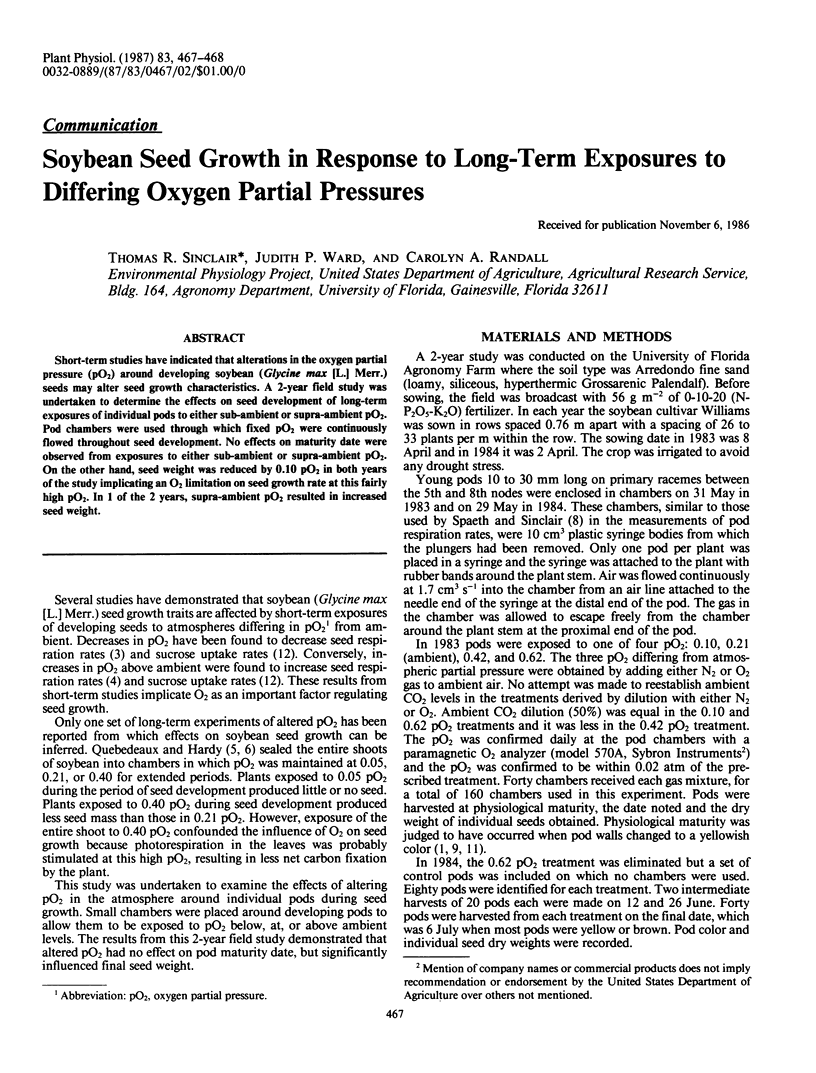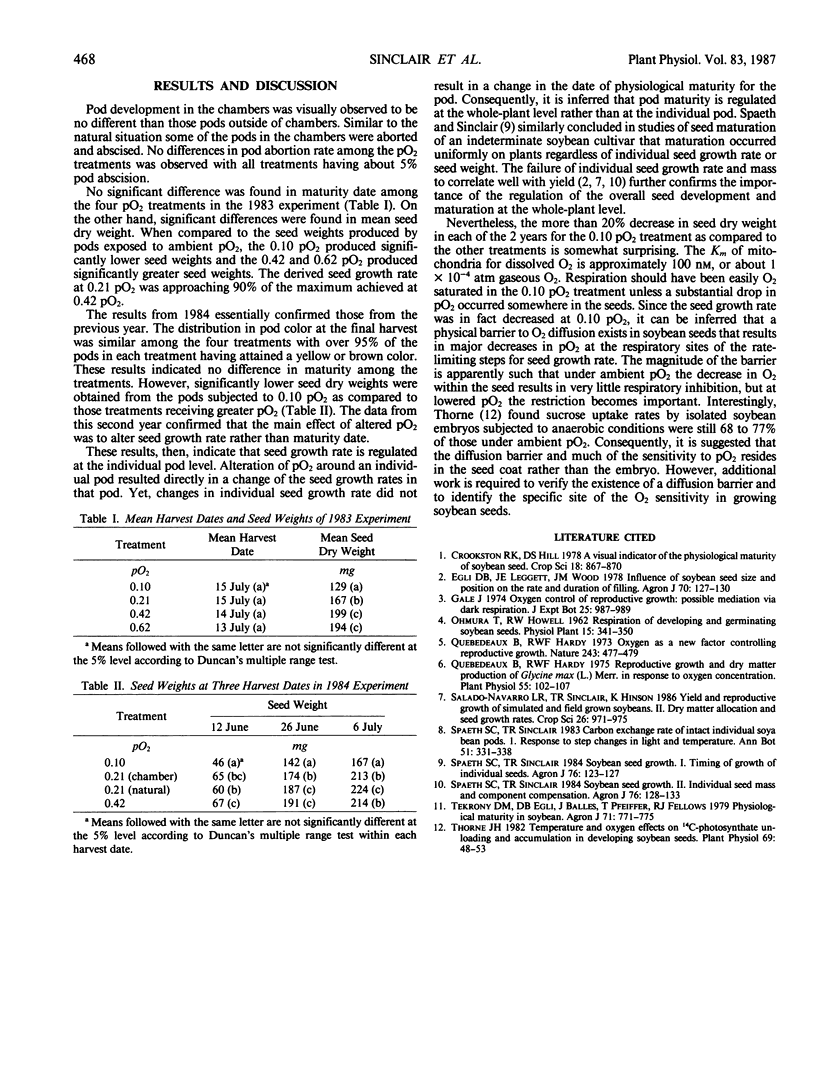Abstract
Short-term studies have indicated that alterations in the oxygen partial pressure (pO2) around developing soybean (Glycine max [L.] Merr.) seeds may alter seed growth characteristics. A 2-year field study was undertaken to determine the effects on seed development of long-term exposures of individual pods to either sub-ambient or supra-ambient pO2. Pod chambers were used through which fixed pO2 were continuously flowed throughout seed development. No effects on maturity date were observed from exposures to either sub-ambient or supra-ambient pO2. On the other hand, seed weight was reduced by 0.10 pO2 in both years of the study implicating an O2 limitation on seed growth rate at this fairly high pO2. In 1 of the 2 years, supra-ambient pO2 resulted in increased seed weight.
Full text
PDF

Selected References
These references are in PubMed. This may not be the complete list of references from this article.
- Quebedeaux B., Hardy R. W. Reproductive Growth and Dry Matter Production of Glycine max (L.) Merr. in Response to Oxygen Concentration. Plant Physiol. 1975 Jan;55(1):102–107. doi: 10.1104/pp.55.1.102. [DOI] [PMC free article] [PubMed] [Google Scholar]
- Thorne J. H. Temperature and oxygen effects on C-photosynthate unloading and accumulation in developing soybean seeds. Plant Physiol. 1982 Jan;69(1):48–53. doi: 10.1104/pp.69.1.48. [DOI] [PMC free article] [PubMed] [Google Scholar]


